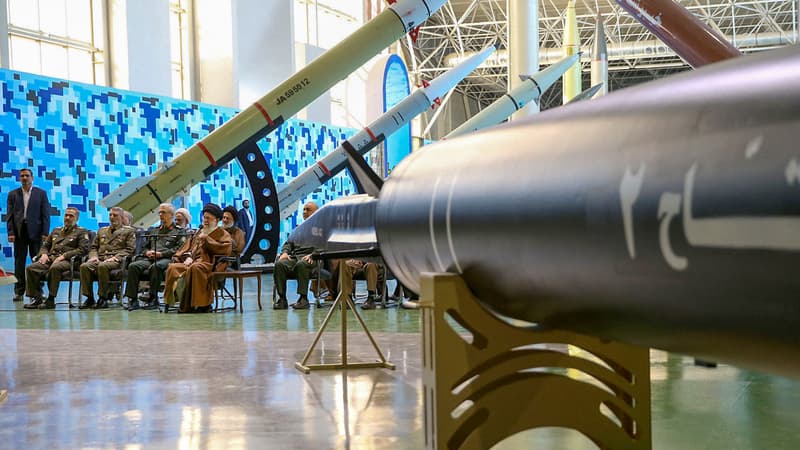A new front is emerging in the Middle East with Iran at the center. In recent weeks, Tehran has launched attacks against Pakistan, Iraq and Syria. This offensive reveals a military power built in a few decades despite international sanctions. At the heart of this capability is a ballistics program of exceptional efficiency and impressive precision.
On Tuesday, the Islamic Republic carried out attacks against what it called “espionage” headquarters and “terrorist” targets in Syria and autonomous Iraqi Kurdistan. Tehran also attacked “terrorist targets” in Pakistan, killing two children according to Islamabad, which retaliated on Wednesday by killing nine according to Iran. Summary of the capabilities of a regional player that attracts Westerners.
Depth and precision
Iran has a vast arsenal of missiles of different ranges – short (300 kilometers), medium (300-1,000) and long (up to 2,000) -, a large proportion of which is produced or assembled locally thanks to an industrial and high level. academic.
Little by little, solid fuel missiles were developed, “easier to store and much faster to put into action (…) and therefore more useful from a tactical point of view,” says Jeremy Binnie, from the company. British Intelligence Private Janes.
The Iran-Iraq war
The Iran-Iraq war (1980-1988) marked a turning point for Tehran, which acquired, in particular, Russian Scud-B missiles to respond to Saddam Hussein’s attacks.
The investments were all the more important as they compensated for the weaknesses of its air fleet.
Foreign aid
Farzan Sabet of the Geneva University Institute told AFP that “Iran’s original ballistic missile arsenal was supplied by Libya, Syria and North Korea.” Tehran also turned to the Soviet Union and then to Russia, before acquiring real autonomy.
At the same time, their missiles “probably use commercially available components, since the Iranians know how to integrate commercial products” into their weapons. And this, despite international sanctions, particularly American ones, which will have had the merit of slowing down the program and increasing its cost, but not of annihilating it, analysts confirm.
Unknown figures
As is often the case in this area, Iranian reserves are unknown but experts consider them plentiful, whether in the hands of the army, the Revolutionary Guard or Iran’s various allies in the region, from the Lebanese Hezbollah to the Houthi rebels of Yemen. .
According to Eva Koulouriotis, a precise estimate is almost impossible, even in Iran alone. The army and the Revolutionary Guard “have their own factories and warehouses,” she explains. Arab and Western sources “report about 60,000 missiles but, in my opinion, the figure is much higher and could reach 200,000” units.
Future ambitions
The Islamic Republic’s ballistics program fuels its nuclear ambitions, which would depend on high-tech missiles if it acquired the bomb, something the West accuses it of wanting to do.
But “it has an important conventional mission that allows it to strike targets with precision from afar” and “deter its adversaries from attacking Iran and some of its foreign interests, or at least make them pay a high price for it.” says Farzan Sabet.
Among Tehran’s objectives is “to improve its ability to attack moving targets”, which requires better guidance systems and a better quality of technical intelligence, considers John Krzyzaniak. Tehran should also want to push back its current range limit of 2,000 kilometers. A complicated project, but not beyond the reach of the regional power.
Source: BFM TV


